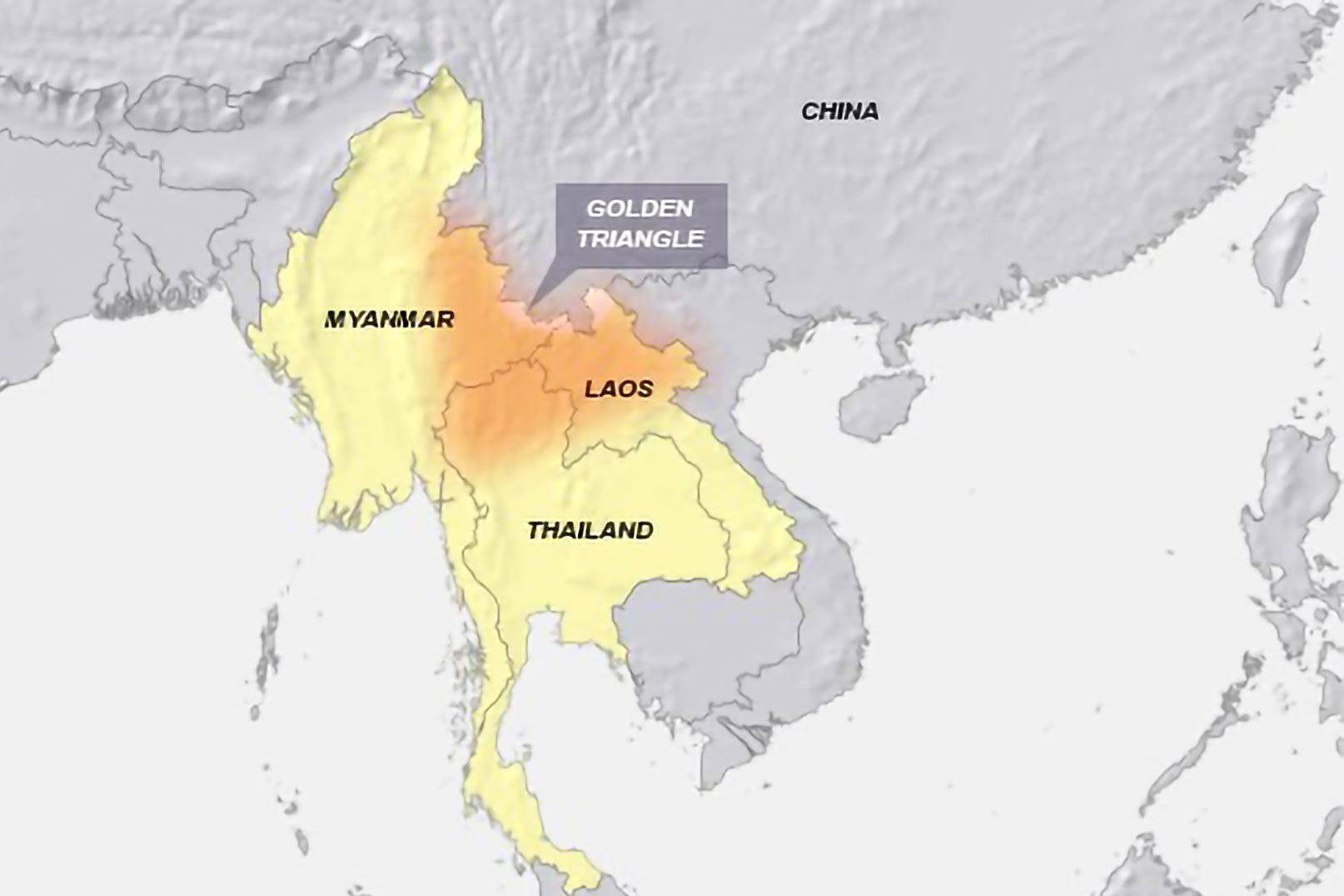Myanmar is the world’s second-largest producer of illegal opium, after Afghanistan. Since World War II, Myanmar has been essential to the international drug trade. The UNODC says that in 2005, opium was grown in about 430 square kilometers in Myanmar.

In January 1996, when drug lord Khun Sa’s Mong Tai Army gave up, Yangon hailed it as a significant victory in the fight against drugs. However, the effort to stop drug use and trafficking is still being held back by the government’s lack of will and ability to take on major drug trafficking groups and its lack of serious commitment to stop money laundering. As a result, most people who grow opium poppies in Myanmar and the highlands of Thailand live in poverty.
In 1996, the U.S. Embassy in Rangoon put out a “Country Commercial Guide” that said, “Exports of opiates alone seem to be worth about as much as all legal exports.” It goes on to say that influential organizations that grow and sell opiates and people with close ties to these organizations are investing in infrastructure and hotels.
After a four-year investigation, it was found that Myanmar Oil and Gas Enterprise (MOGE) was “the main way that the Myanmar Army used to launder the money made from selling heroin.” MOGE got $15 million from a business deal with the French oil company Total in 1992. Unocal later joined the agreement. “Even though MOGE has no assets other than the small payments it gets from its foreign partners and doesn’t make any money, and even though the Myanmar government has never been able to give MOGE any foreign currency credit, hundreds of millions of dollars have been sent to this company’s bank accounts in Singapore,” says Francois Casanier. Investigators looked at a confidential MOGE file that showed that more than $60 million came from Myanmar’s most famous drug lord, Khun Sa, and went through the company. “Drug money flows through every part of Myanmar’s economy, and the SLORC also sees big foreign partners as big shields for money laundering.” For a 40 percent fee, banks in Rangoon helped people launder money.
After an eradication campaign in the Golden Triangle, the number of poppies grown in the country dropped by more than 80% between 1998 and 2006. The U.N. Office on Drugs and Crime has confirmed that opium poppy farming has gone down since 2014, while the production of synthetic drugs has gone up. A United Nations report also says that corruption, poverty, and a lack of government control are common reasons why already poor farmers start making drugs.
Horse and donkey caravans take opium and heroin bases made in northeastern Myanmar to refineries along the Thailand–Burma border, turning them into heroin and heroin bases. Most of the finished goods are sent across the border to towns in northern Thailand and then down to Bangkok, where they are sent to markets worldwide.
Usually, couriers, usually Thai and American citizens, bring heroin from Southeast Asia to the United States on commercial airlines. Golden Triangle heroin mostly comes into the U.S. through California and Hawaii. Still, small amounts are also brought into New York City and Washington, D.C. Southeast Asian groups have been able to get heroin into the United States, but at first, it was hard for them to get it to the streets. But when Asian drug traffickers were locked up in American prisons in the 1970s, they met other Asian and American prisoners. Because of these connections, Southeast Asian traffickers have been able to get in touch with gangs and organizations that sell heroin to stores.
The Golden Triangle is now one of the best places in the world to make synthetic drugs, especially methamphetamine. This is because Yaba tablets and crystalline methamphetamine production have increased, including exporting to Australia, New Zealand, and East and Southeast Asia. Sam Gor, also known as “The Company,” is thought to be one of the leading international crime groups responsible for the increase in the production of synthetic drugs in the area, especially in Shan State, Myanmar. The Cantonese Chinese syndicate is made up of people from five different triads. It is thought that Tse Chi Lop, a Canadian gangster born in Guangzhou, China, is in charge. The Cantonese Chinese syndicate is mainly involved in drug trafficking and could make up to $8 billion per year. Sam Gor controls 40% of the methamphetamine market in Asia and the Pacific. He is also accused of trafficking heroin and ketamine. In addition to Myanmar, the group works in Thailand, the Lao People’s Democratic Republic, New Zealand, Australia, Japan, China, and Taiwan.
The Chinese Muslim Panthay are the same kind of people as the Chinese Chin Haw, who is also Muslim. Both are the children of Chinese Hui Muslims who moved from China’s Yunnan province to the United States. In the Golden Triangle Drug Trade, they often work together. Chinese Muslims and non-Muslim Jeen Haw and Panthay are both known to be members of Triad secret societies. They work with other Chinese groups in Thailand, like the TeoChiew and Hakka and the 14K Triad. They did business with heroin. One of the most essential Jeen Haw heroin drug lords was a man named Ma Hseuh-fu. He was from the province of Yunnan.